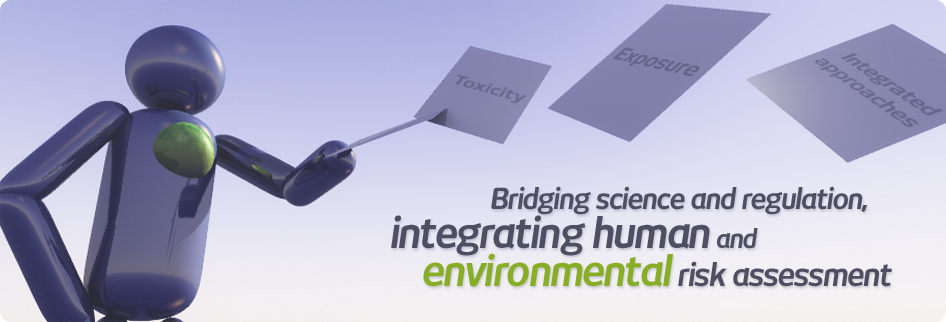Newsletter 2 Strengths, Weaknesses/limitations, Opportunities, And Threats (SWOT): Analysis Of The "as Is" Situation In RA
Structured telephone interviews were conducted with subject matter experts in the area of risk assessment and risk management within regulatory bodies and the private sector at EU level. The experts were asked to characterise weaknesses/gaps in the current risk assessment process and to specify what changes would be needed to facilitate improved risk assessment practice. Consolidation and refinement of our initial evaluation was achieved through expert consultation during the first HEROIC workshop, held at INERIS, Verneuil-en-Halatte, France, April 12th-13th, 2012, which convened 60 experts from public institutes, academia and business sectors. Results from the gaps and needs analysis are briefly summarised below.
Infrastructure and organisational set-ups
The separation of human health and environment risk assessments is deeply rooted in the culture and practices of many risk assessment or management institutions and organisations at the EU level and beyond. This is mainly considered a consequence of the allocation of the risk assessment of different chemicals categories to distinct regulatory authorities and scientific disciplines. The lack of exchange between disciplines and authorities, and also between risk assessors and risk managers, hampers more efficient working relationships.
Capacity was unanimously recognised as another issue for risk assessment. Despite human resource constraints, the demand for risk assessment remains high, regulatory timeframes remain ambitious and assessments are getting increasingly complex. This growing complexity and the interdisciplinarity of risk assessment sciences also result in major capability issues which are amplified by the lack of adequate training programmesScience and policies
Risk assessors recognised the need for sufficient data as being the most critical success factor to carry out proper risk assessment. Exposure assessment and cumulative assessment of mixtures were identified as the weakest points in current risk assessment practice. Risk assessors are challenged by the growing complexity of regulatory sciences and acknowledged the need for continuous training and up to date information on the latest developments in their field.
From the standpoint of risk management, the need for more informative risk assessments was recognised. These need to translate the technical expression of risk characterisation parameters into human health and ecological criteria, such as the impact on morbidity and mortality or human welfare and ecosystems services. Since risk management decisions are not purely science-driven but must also include political, economic and social factors, risk managers need to consider cost-benefits which put into perspective the human health and environmental risk implications of different alternative approaches to risk management.
Risk perception and communication requirements differ among stakeholders, and risk managers need to be able to respond to those different needs. These requirements highlight the importance of problem formulation at the onset of the risk assessment process. Distinct national protection goals, priorities and differences in risk perception among different societal groups, or with respect to different categories of chemicals, influence risk management decisions. Therefore, risk assessors and risk managers need to find a common understanding of the priorities and protection goals from the outset of the risk assessment process.
Based on the results of the initial landscaping exercise and the SWOT analysis, an action plan has been drafted with recommendations which will be further developed in the framework of the HEROIC Project. For more details, please contact Lothar Aicher, (lothar.aicher@unibas.ch) or Nicolas Roth (nicolas.roth@unibas.ch). As next steps, HEROIC WP3 (“Data and Models for Exposure and Effects Assessment”) and WP4 (“Integrated Decision Making Framework for the Future”) will address the issue of translating data into knowledge.

